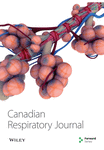Health Effects of Air Pollution in Canada: Expert Panel Findings for The Canadian Smog Advisory Program
Abstract
OBJECTIVE: To review the evidence on health effects of air pollution for the Canadian Smog Advisory Program.
METHODS: Evidence was reviewed by two expert panels, who were asked to define the health effects expected at levels of exposure given by the National Ambient Air Quality Objectives, to examine a variety of issues related to communicating with the public about environmental health risks, and to draft health messages for the advisory program.
RESULTS: The panels concluded that health effects of ground-level ozone at levels that occur in Canada include pulmonary inflammation, pulmonary function decrements, airway hyperreactivity, respiratory symptoms, possible increased medication use and physician/emergency room visits among individuals with heart or lung disease, reduced exercise capacity, increased hospital admissions and possible increased mortality. Similar effects were felt to occur in association with airborne particles, with the exception of inflammatory changes, and with the addition of increased school absenteeism. Poor data on individual exposure were identified as a limitation of studies on hospital admissions and mortality.
RECOMMENDATIONS: The panels identified the need to reflect the evidence accurately without unduly raising public concern and recommended that advisory health messages identify expected health effects, while health care providers could more appropriately recommend protective actions to individuals. Supplementary educational strategies and evaluation of the advisory program were also recommended.




